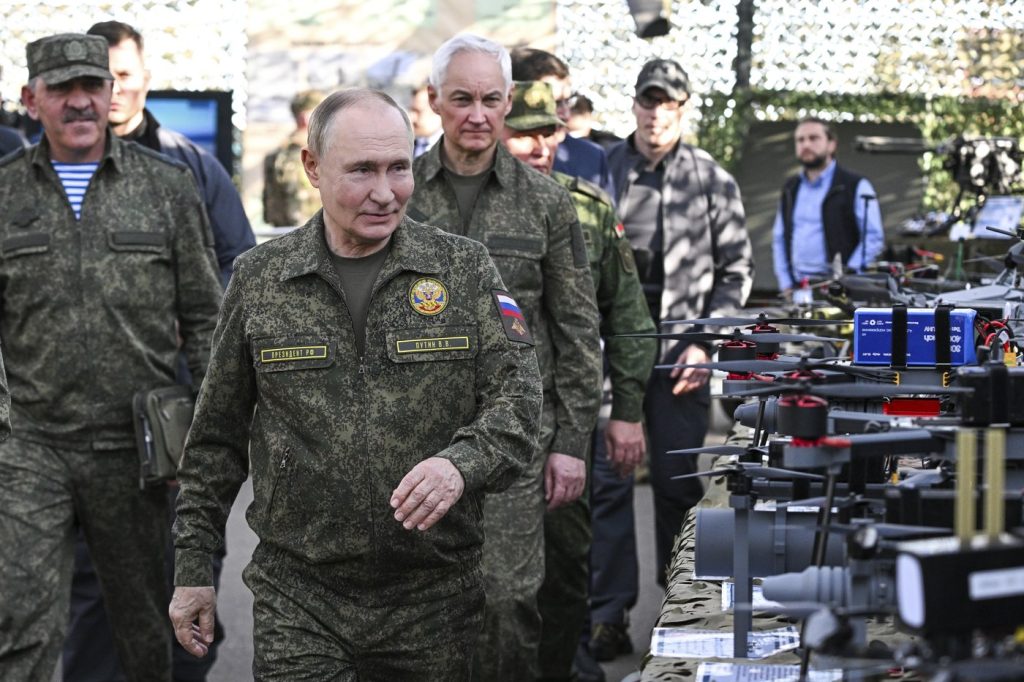Intrusions into NATO's airspace attributed to Russia have reached an unprecedented scale this month, prompting analysts to speculate whether the Kremlin is testing the alliance's resolve or attempting to distract it from the ongoing war in Ukraine. In the wake of Russia's 2022 invasion of Ukraine, such incursions have escalated in severity and frequency, notably the swarm of drones that entered Polish airspace on September 10, prompting NATO to scramble jets for interception.
Estonia reported that Russian fighter jets violated its airspace last week, allegedly remaining there for 12 minutes—a move described by the Estonian foreign minister as "unprecedently brazen," even as Russia denied the event. Additionally, Romania and Latvia reported drone incursions this month, raising concerns about a broader strategy from Moscow aimed at challenging NATO's authority and stability.
With Russia making incremental gains in Ukraine and thus holding a stronger bargaining position in potential peace talks, the recent airspace violations pose serious questions regarding Moscow's motivations behind provoking a possible direct military confrontation with NATO. The incident in Poland marks the most significant direct military engagement between NATO and Russia since the full-scale invasion began.
Before initiating its invasion of Ukraine, Russia had issued demands for NATO to halt any expansion plans for Ukraine's membership and retract troop deployments near its borders—demands that NATO dismissed. Furthermore, President Vladimir Putin had warned the alliance against enabling Ukraine to launch long-range attacks into Russian territory, hinting at potential retaliatory measures against NATO countries that support such actions.
Some experts suggest that the recent uptick in airspace violations by Russia functions as a tactical probe into NATO's response mechanisms, possibly seeking to discern divides or hesitations within the alliance. This section of analysts includes Estonian Defense Minister Hanno Pevkur, who theorizes that Russia's strategy may involve diverting NATO's attention and resources away from supporting Ukraine to focusing on its own air defense capabilities.
Mark Galeotti of the Mayak Intelligence consultancy characterizes these incursions as a form of "coercive signaling" that aims to suppress NATO's commitment to Ukraine, particularly in connection with troop deployments or military assistance. Furthermore, Edward Lucas from the Center for European Policy Analysis suggests that Russia may be trying to emphasize NATO's vulnerabilities, sowing doubt within the alliance regarding the willingness of member states to intervene for the Baltic nations in case of an attack.
Accompanying these motivations, analysts point out the possibility that Russia is also gauging the response from the U.S., the largest NATO member. Following the drone incursion in Poland, NATO swiftly activated a mechanism allowing any member to call for a meeting if territorial integrity is threatened, resulting in enhanced air defenses along its eastern borders. While Poland's Prime Minister expressed a strong intention to take down any unauthorized objects entering its airspace, there remains uncertainty about the unified response of NATO allies to such incidents.
The response from the U.S. has been mixed; President Trump initially suggested that the Russian incursions could have been accidental, although he later affirmed that NATO should confront intrusions more assertively. Despite the rhetoric, doubts linger regarding whether the U.S. is prepared to support military action in defense of NATO commitments.










